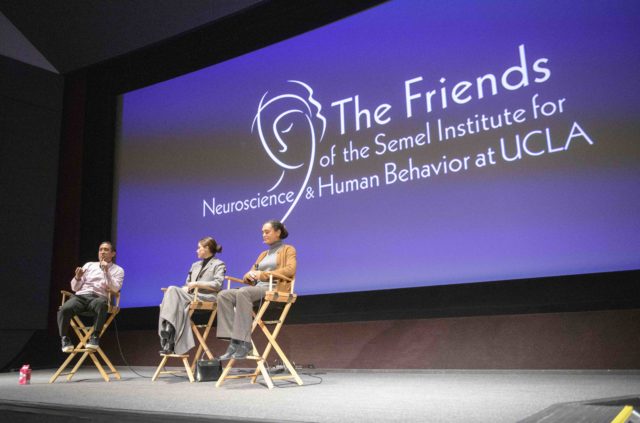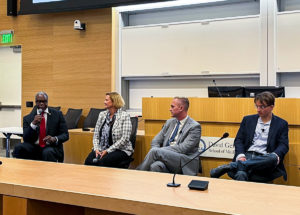The Friends of Semel Institute for Neuroscience and Human Behavior hosted a screening of and panel discussion on docudrama film “Junction” to bring attention to the ongoing opioid crisis.
Written and directed by actor Bryan Greenberg, “Junction” follows a pharmaceutical company CEO, his son Michael – played by Greenberg – and a physician as they each deal with the effects of opioid use in their personal and professional lives. The screening, which was held Jan. 21 in the James Bridges Theater, was followed by a discussion with actors and UCLA psychiatrists about medical ethics, interpersonal relationships and opioid abuse.
Dr. Timothy Fong, a clinical professor of psychiatry at the Semel Institute, said in an interview that stigma surrounding mental health is perpetuated by the media, adding that art – including films – can heavily influence people’s thoughts and attitudes toward certain subjects.
“If I write an article, or I say a few things, very few people see that,” Fong added during the panel. “But millions of people starting this week will see this movie, and hopefully that will change and educate millions of peoples’ minds about what addiction is, what recovery is.”
In a video played before the panel, Greenberg said the movie was inspired by his own experiences of being prescribed the painkiller oxycodone after a surgery and becoming partially addicted to it. Greenberg added in the video that his goal with the docudrama was to spotlight addiction and raise awareness about it.
Actress Sophia Bush, who played Michael’s wife, was also present at the panel. Bush said during the panel that the producers sought to utilize the power of the story in order to provide a more complete picture of the characters’ lives.
“We get to humanize something that very often, we look at mathematically,” Bush said in the panel. “That felt incredibly important to us – really making sure that you got to see the life behind a statistic.”
Dr. Helena Hansen – interim chair of psychiatry and biobehavioral sciences at the David Geffen School of Medicine – said during the panel that the film also sought to challenge stereotypes surrounding people susceptible to addiction.
The panelists also discussed the impacts of the opioid crisis on college students. Because the media is so influential on people’s behavior, college students – many of whom are being exposed to drugs for the first time – are particularly vulnerable to misuse, Fong said in an interview.
“It doesn’t take that many weeks or that many months for the harm from addiction to manifest itself,” Fong said in an interview.
He added in the interview that the risk of death from substance use has increased over the past few decades because of fentanyl contamination, making it much more likely for people to die from first-time drug use than it was in the 1980s or ‘90s.
Chiara Frank, a third-year neuroscience student, said she attended the event because she has seen firsthand how opioid use and fentanyl have affected students around her.
“Films are just one example of such a profound way that people can connect with other people … and also just as a widespread medium of education for the public and especially for students,” Frank said.
Frank, who is also an executive director of the mental health organization Active Minds at UCLA, said the event helped her understand what external factors, including feelings of shame, contribute to how people manage addiction.
When redesigning health care systems to include more support and better access, it is important to provide transparency and resources to people of all ages so they know where to get help, Bush said during the panel.
Hansen added during the panel that she appreciated how the film highlighted issues within the American healthcare system, including excessive emphasis on profit and a lack of federal regulation. Fong also said during the panel that while he feels current support for those with addictions is lacking, steps like having medication available such as Narcan – which treats overdose in an emergency – can be taken.
Fong added in an interview that all three storylines in the film shared the common theme of loneliness. Reaching out and building connections with others is one way to reduce the risk of opioid use and addiction, he said.
Ultimately, Bush said during the panel that she chose to participate in the film because she was passionate about the message they were trying to share.
“We forget sometimes that we may not have the power of world leaders, but we do have the power of our platforms,” Bush said. “If everyone who sees this movie could get a resource number, or website or sheet in front of five people, the ripple effect of that has the potential to be 5 million people.”






Comments are closed.